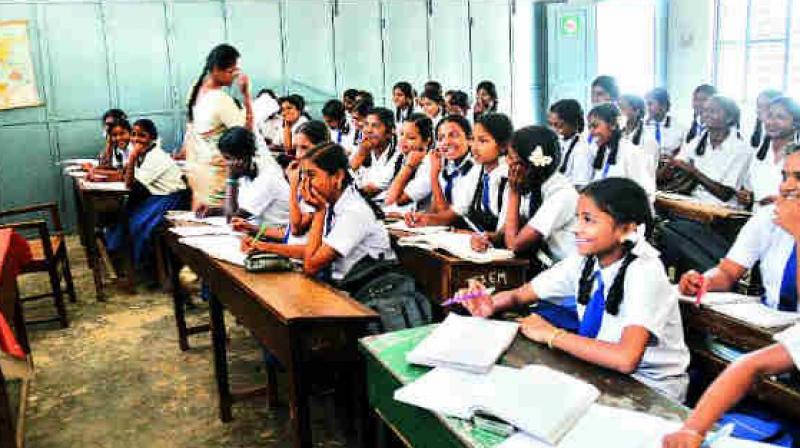Cold wave hits studies in state-run schools in Telangana
Lack of blankets affects sleep of 3 lakh children in hostels.

Khammam: The dip in temperature has hit education of children studying in Kasturbaa and other government residential schools in Telangana. The students in these schools are unable to sleep well due to the severe cold and they are finding it difficult to wake up early in the morning.
The cold is severe in Agency areas so much so that it is dropping below 10 degree Celsius in some areas. As students are not able to sleep well and focus on their studies, the government has decided to supply woollen blankets to 3 lakh kids this year. The cost of each blanket will be Rs 642 and the government sanctioned Rs 15 crore for this.
Deputy Chief Minister and Minister for Education Kadiam Srihari said the problem was identified first in 391 Kasturbaa schools in the state, in which 73,000 girls are studying.
“The children are not having proper blankets to protect them from the cold and this affecting their studies,” he said, adding that students in other residential schools and welfare hostels were also facing the same situation.
The issue has been taken to the notice of Chief Minister K Chandrasekhar Rao and he sanctioned woollen blankets to the students. The Kasturbaa schools admit students of economically oppressed section in the society but who are good at academics. Closed circuit cameras are being set up in Kasturbaa schools and digital classroom would be started in these soon.
It has been planned to set up 210 new residential schools in 2017-18 to help 2 lakh under-privileged children. “Encouraging girl child education is a priority for TS government. Not a single girl child must be left illiterate.”
Minimum temperature recorded at 12.3° C
Temperatures have dropped in Nizamabad district in the last few days. Following cold wave from neighbouring Maharashtra, people in the district are being inconvenienced due to the cold. On Sunday, minimum temperature was recorded at 12.3° Celsius.
Unable to bear the severe cold, people are remaining indoors till the sun has completely warmed up the atmosphere in the mornings. Similarly, people are returing homes early as it is getting dark and cold soon.
Many people are buying winter wear to keep themselves warm. They are throning sweater shops at Khaleelwadi areas. Tibetans, who set up shops at the Government General Hospital area, are happy over the dipping temperatures as it is helping them do brisk business.
Speaking to Deccan Chronicle, sources in the metrological department said that cold wave from north India usually affects people in Nizamabad and Adilabad districts. In addition, the geographical conditions in the district also have impact on the weather, both in summer and winter.
The misty mornings are causing inconveience to commuters plying through the district. Children and old-aged persons are catching infections due to the severe cold conditions.
Doctors are advising people, specially children and pregnant women, not to venture out in the severe cold as it would lead to serious health problems. Very low temperatures are being recorded at many places in the state.
Green cover brings down temperature
Low temperatures are being recorded in Adilabad district due to forest cover and hill area when compared to Nirmal, Mancherial and Asifabad districts. Still, there is a considerable stretch of dense forest areas in the Adilabad district and this resulted in temperatures falling to even 4 degree Celsius in winter.
The temperatures are also low in the areas where number of tanks with full of rainwater and streams and rivulets are flowing. Especially, irrigation projects such as Satnala, Kadam, Mattadivagu are with full of storage rainwater which is also contributing factors to the low temperatures in the Adilabad district.
The low temperatures are being recorded in forest areas while normal temperatures in the plan areas and residential areas and towns. The density of the population is also contributing to the low temperatures. Temperatures are normal in coal belt area when compared to forest areas. The density of population in a given area is another factor which affects temperature of a place.

